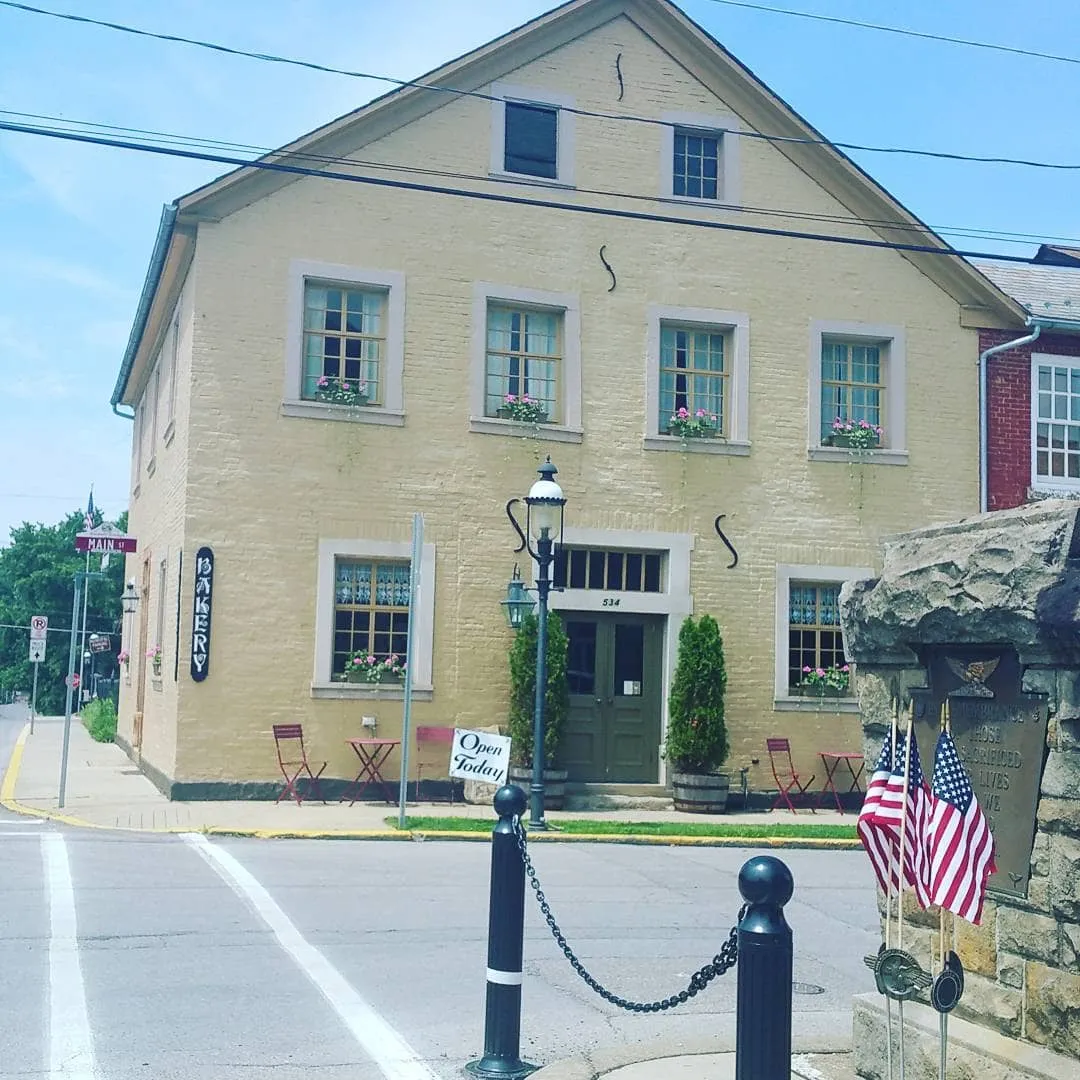The town was built in a square like European villages. In New Harmony, there was also a town square, but in Economy, the Harmonists developed a town plan with main streets rather than a central square.
On the side extension of the church is a shell doorway. This is another Harmonist symbol. Across the diamond in the red-painted Harmonist building is an antique shop. It was the Harmonist community store. It has a wine cellar exactly like we saw below. Legend has it that there was a tunnel underground to connect these two wine cellars, but so far, there is no definite proof.
Next door in the gray building is where Father Rapp lived. His house burned, so only the foundation remains. Next to this building is another Harmonist dwelling where Frederick Reichert Rapp lived.
The gold accumulated by the Society was stored in a vault in the basement below. The doorway is interesting with a "Philadelphia design." The large white building (Now Sapienza's) was the Harmonist Inn and tavern.A heavy metal hitching post for an individual's horse is on the sidewalk. Down Mercer Street is a white building that is now Harmony's post office and borough building. It was initially used as a schoolhouse between 1882 and 1956.
In the distance, you might be able to see the stone fence, the Harmonist cemetery. During the ten years that the community existed in Harmony, over 100 members passed away. They did not identify themselves with tombstones.
At the far end is a gate. This is very interesting because it is carved out of a one-ton solid piece of stone and is held in place with only one pin. It opens easily and remains in its original form, unchanged since its creation in 1805. It is shaped like the stone tablets that Moses used to record the Ten Commandments. There is one stone in the cemetery. It was made for Father Rapp's son, who was killed in a milling accident when he was 32. It is engraved in German and leans against one wall.